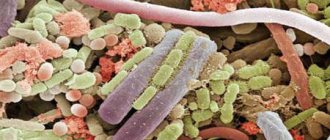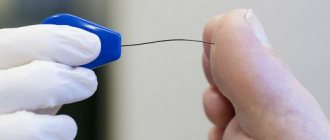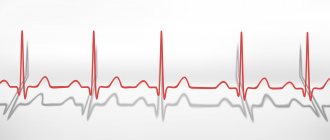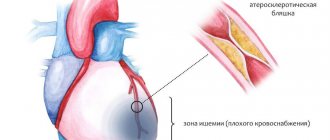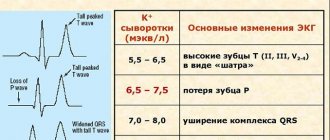With the onset of autumn, many countries around the world are preparing for the second wave of the coronavirus pandemic. At the time of this writing, Russia, according to data compiled by Johns Hopkins University, ranks fourth in the world in the number of identified cases of Covid-19. Let me remind you that earlier it was Russia that became the first country in the world to register a vaccine against the new coronavirus infection - Sputnik V. Moreover, as it became known in the second half of September, it will soon be possible to purchase a medicine against Covid-19 in Russian pharmacies called Areplivir. . The retail price, as reported by RBC, will be more than 12 thousand rubles per package of forty 200 mg tablets. We'll tell you what is known about the new drug and whether it's worth running to the pharmacy for it.
Alas, the miracle did not happen, since clinical trials of the new drug are not publicly available, and its effectiveness is in doubt
Areplivir and Coronavirus – what do you need to know?
“Two Russian-made drugs for the treatment of coronavirus have been approved for sale in pharmacies, which will allow treatment of this infection at home,” the Ministry of Health said in a statement to the state news agency RIA Novosti. Both drugs are Russian versions of favipiravir , a generic version of a drug against the influenza virus developed by the Japanese company Fujifilm.
Despite hopes previously expressed by Japanese Prime Minister Shinzo Abe, favipiravir has not been approved to treat Covid-19 after a Fujifilm trial showed "inconclusive" results.
According to Lenta.ru, clinical trials of the tablet drug Areplivir have shown a reduction in recovery time in patients with coronavirus, although it is officially recommended for the treatment of the virus only in Russia, India and China.
One of the approved drugs, registered under the Areplivir trademark, will appear on pharmacy shelves in most Russian regions from September 21, 2020, a representative confirmed to Kommersant. It is expected that at the same time another drug will appear - Coronavirus. According to the manufacturer of Coronavir, the drug minimizes complications associated with Covid-19.
There is currently no cure for Covid-19 in the world
To always keep abreast of the latest news from the world of popular science and high technology, subscribe to our news channel on Telegram
Review of the newest drugs
The latest drugs for the treatment of hepatitis C were released in 2016. Since the end of January 2020, the use of the drug Zepatir, which is produced on the basis of Grazoprevir and Elbasvir, has been approved.
Zepatir can be used as a stand-alone agent or in combination with Ribavirin in the treatment of genotypes 1 and 4. Prescribed only to patients over 18 years of age, 1 tablet. per day for 12 or 16 weeks. The effectiveness of treatment for those infected with HCV genotype 1 was 94-97%, and for those infected with genotype 4 - 97-100%. Side effects include increased fatigue, headache, nausea, and if Zepatir is taken together with Ribavirin, migraines and anemia are possible. The new medicine is prohibited for patients with hepatitis C who are diagnosed with moderate or severe liver damage.
If we consider new drugs for hepatitis C, a special place is occupied by the drug Epclusa - a combination of sofosbuvir (400 mg) and velpatasvir (100 mg). Guarantees successful treatment of HCV genotypes 1 to 6 even in the presence of liver cirrhosis. This is one of the new drugs from the biopharmaceutical corporation Gilead Sciences International, which leads to the highest therapeutic rates (in 95-99% of cases). For some patients, Ribavirin is added to the drug. Treatment of hepatitis C with a new drug is indicated from the age of 18.
Another new drug that appeared at the beginning of 2020 is Hepcinat LP. This generic version of American Harvoni is manufactured in India by Natco. 1 tablet contains 400 mg of Sofosbuvir and 90 mg of Ledipasvir. Prescribed for genotype 1 of hepatitis C. The course of treatment lasts an average of 12 weeks, and in case of complications it is extended to 24 weeks. With a high viral load, it can be prescribed together with Ribavirin and interferon. The duration of therapy is 12-24 weeks.
There is another new Russian-made drug - Profetal, developed on the basis of interferon. During the treatment process, accelerated recovery of liver cells is observed, which makes it possible to reduce the course of therapy with antiviral drugs to 6 weeks.
The effectiveness of Areplivir
So, let's try to figure out whether it is worth buying a new Russian drug - you must agree, before allocating 12,320 rubles from the budget for a new drug, you want to know, if not everything, then as much as possible about it. On a personal note, I’ll add that judging by all the available information about Areplivir, it’s not worth doing this, at least for now. One of the first and most important arguments in favor of saving money is the question of the effectiveness of the drug.
“More than 50% of patients who took part in the clinical study showed improvement after seven days of treatment, which is 1.5 times better than in the control group that did not take the drug,” these words are quoted by almost all Russian media that wrote about new drug against Covid-19. At the same time, during the preparation of this material, I was unable to find references to clinical studies of the new drug.
While scientists around the world work on a vaccine against coronavirus, WHO experts warn that the worst is yet to come
Meanwhile, the Ministry of Health approved another brand of favipiravir, Avifavir, although its production was mainly export-oriented, with deliveries to neighboring Belarus and Kazakhstan. An article by Gazeta.ru dated June 2020 quotes experts as saying that it is too early to talk about the effectiveness of the drug:
The results of the research have not been published, the methodology for conducting it has not been described, and in the scientific world until you see a publication in a reputable scientific journal, it is too early to say - this is a little populism.
Deputy Executive Director for Medical Services at BestDoctor Yulia Tkachenko in an interview with Gazeta.ru
It should also be noted that both areplivir and avifavir are generics - medicines that contain a chemical substance - the active ingredient (the same favipiravir) identical to that patented by the original developer (Fujifilm), therefore it is not entirely advisable to compare their effectiveness.
Well, to be honest, the lack of publicly available clinical studies of the antiviral drug Areplivir (Coronavir and others) only casts doubt on its effectiveness, and the high cost of the drug is reminiscent of the exorbitant prices of bullshit - drugs with unproven effectiveness.
What is needed for effective therapy
During treatment with new drugs, it is necessary to follow all the recommendations of the hepatologist and not skip taking pills. Due to a reduction in dosage or skipping even one tablet, therapy may be ineffective. Medicines should be taken regularly according to the prescribed schedule at the same time.
During HTP, you need to undergo regular tests to monitor the results. PCR is given at 2, 4 and 12 weeks of therapy, as well as 4 and 12 weeks after its completion. Blood biochemistry is checked at 4, 8 and 12 weeks. Such monitoring of antiviral therapy has been recommended by the European Association for Research of the Liver since 2017. However, each case of infection is individual, and the examination schedule is drawn up taking into account the characteristics of each patient.
Hepatitis C must be treated comprehensively. Together with new antiviral drugs, hepatoprotectors are prescribed that can restore liver cells and normalize its function. They can be of plant origin (Karsil, Hofitol, Legalon) or synthetic (Phosphogliv, Heptral, Hepa-merz). Preparations based on ursodeoxycholic acid (Ursofalk, Ursosan) have a good effect.
It is important during and after AVT to adhere to diet No. 5 according to Pevzner, which promotes a speedy recovery. First of all, alcohol, fatty, spicy, salty foods are excluded. The diet must be enriched with vitamins, fiber, and the drinking regime must be observed.
Is it true that favipiravir is dangerous?
In an interview with Novaya Gazeta dated July 13, 2020, Professor of the National Research University Higher School of Economics, Doctor of Medical Sciences Vasily Vlasov notes the following: “We must remember that in the arsenal of medicine there are very few antiviral drugs with significant effectiveness. Perhaps the only great success in this area is the development of drugs for hepatitis C and AIDS. But medications do not cure AIDS, they only slow down the multiplication of the virus in the body. »
Favipiravir was once developed in the United States, but was registered only in Japan, but was not used there either.
The fact is that this medicine has very unpleasant side effects - the medicine is toxic for pregnant women , in the sense that it causes deformities and death of the fetus. This is a side effect that makes it impossible to use the medicine in widespread practice. This is why this medicine has not been registered in the United States. In Japan, it was registered exclusively in case of the emergence of a new killer flu, an epidemic that had been expected since about the mid-2000s.
Professor of the National Research University Higher School of Economics, Doctor of Medical Sciences Vasily Vlasov
Moreover, the article notes that a number of experts, including the Association of Clinical Research Organizations (ACRO), have already opposed the decision to register the drug for outpatient treatment.
At the forefront of progress
One of the greatest achievements of medical science of the 20th century. is the discovery and introduction of antibiotics into clinical practice, “victory over microorganisms with the help of their own weapons.” However, in fact, the use of antibacterial agents has resulted in a protracted confrontation between humanity and the microcosm. The uncontrolled use of antibiotics, from their use in animal husbandry to quickly gain weight in livestock to the everyday “eating” of these drugs for any cold, contributes to the spread of multidrug-resistant strains of bacteria. Despite the ability of microorganisms to adapt to drugs, scientists do not give up. From 2010 to the present day, 18 new antibacterial drugs and their combinations have been introduced into clinical practice (some only in the manufacturing country). One of these drugs was developed and used in the Russian Federation, and seven more are registered for use in our country. We offer you an overview of the 10 most interesting of them. We will mention the remaining 8 only in passing. It is worth remembering that most of the drugs indicated in the article are reserve drugs for clinical therapy and are not suitable for household use.
Ceftazidime/avibactam
, approved by the US Food and Drug Administration (FDA; Food and Drug Administration) in 2020, registered in the Russian Federation since May 2020.
Ceftazidime, a third-generation cephalosporin, is a broad-spectrum drug that disrupts the formation of the bacterial cell wall through penicillin-binding proteins and induces its damage by activating autolytic enzymes. The activity of this antibiotic against such gram-negative microorganisms as Pseudomonas aeruginosa, Klebsiella spp, Escherichia coli and Enterobacter spp
.
Nosocomial strains of these bacteria increasingly produce an expanded spectrum of β-lactamases—enzymes that neutralize cephalosporins. A new antibiotic solves this problem with the β-lactamase inhibitor avibactam, which restores sensitivity to ceftazidime. Avibactam inactivates class A β-lactamases (including carbopenemases from Klebsiella pneumoneae
), as well as C and D, resistant to clavulanic acid and tazobactam.
However, avibactam is not effective against class B β-lactamases. According to the results of the REPRISE study, published in 2020 and including patients with hospital-acquired infections from 16 countries, 9% of patients were resistant to ceftazidime/avibactam therapy.
Indications for the use of ceftazidime/avibactam: complicated intra-abdominal infections, complicated urinary tract infections, hospital-acquired pneumonia (including ventilator-associated), as well as infections caused by multidrug-resistant gram-negative microorganisms with limited treatment options [1, 2].
A similar approach to overcoming resistance - a combination of a well-known antibiotic with another β-lactamase inhibitor - is implemented in the drug
meropenem/vaborbactam
(approved by the FDA in August 2020, not registered in the Russian Federation).
Ceftolozane/tazobactam
, approved by the FDA in 2014, registered in the Russian Federation since November 2018.
Ceftolozane is a new fifth generation cephalosporin. Unlike the previous drug, it is directed mainly against P. aeruginosa
. Due to its heavier side chain, ceftolozane is insensitive to class C β-lactamases, and due to its very strong binding to penicillin-binding proteins, it is not subject to active efflux (removal from the bacterial cell) and is not sensitive to the loss of porin channels by bacteria, through which a number of other antibiotics penetrate.
Tazobactam additionally inactivates some class A β-lactamases (but not carbapenemases).
Indications for the use of ceftolozane/tazobactam: complicated intra-abdominal infections, complicated urinary tract infections [3].
Also, another fifth generation cephalosporin was previously registered (FDA - 2010, RF - 2012) - ceftaroline fosamil
.
It has a wide spectrum of action against both community-acquired gram-positive (including methicillin-resistant strains of S. aureus
) and against gram-negative microorganisms.
Dalbavancin
, approved by the FDA in 2014, registered in the Russian Federation in 2020.
A representative of the class of semisynthetic lipoglycopeptides (glycopeptides with an attached lipophilic side chain), a logical “continuation” of vancomycin, used since 1958. Like its predecessor, dalbavancin binds to peptidoglycans during the synthesis of the bacterial cell wall and disrupts it.
The drug is active against MRSA and methicillin-resistant Staphylococcus epidermidis
(MRSE), as well as some other streptococci and enterococci. It has no clinically significant activity against gram-negative bacteria. According to research, it has shown similar effectiveness to the vancomycin/linezolid combination in the treatment of skin infections, but differs in ease of use: two injections once a week versus two injections per day for the same two weeks.
Indications for the use of dalbavancin: acute bacterial infections of the skin and soft tissues [9].
Another lipoglycopeptide, oritavancin
(approved by the FDA in 2014, not registered in the Russian Federation) has characteristics similar to dalbavancin, is prescribed for the same indications, but is administered once.
Tedizolid
, approved by the FDA in 2014, registered in the Russian Federation in 2020.
A drug of the 2nd generation oxazolidinone class. Oxazolidinones are synthetic antibacterial drugs based on the ring molecule 2‑oxazolidone. Tedizolid is a descendant of the well-established linezolid, first released in 2000.
Effective against a wide range of gram-positive bacteria, including MRSA, various streptococci and enterococci (including vancomycin-resistant; VRE). Inactive against gram-negative bacteria.
Mechanism of action: disrupts the synthesis of bacterial proteins already at the stage of ribosome creation by binding to its 50S subunit. In general, according to numerous comparative studies, it is not always and not significantly superior in effectiveness to linezolid, while the latter has significantly more indications for use.
Indications for the use of tedizolid: acute bacterial infections of the skin and soft tissues [10, 11].
Thioureidoiminomethylpyridinium perchlorate
, registered in the Russian Federation in 2012.
The only domestic antibacterial agent on the list is also approved for use only in the Russian Federation. This is a synthetic anti-tuberculosis drug, the mechanism of action of which has not been fully established. There are also no results from a controlled study with a larger number of patients.
According to preliminary data, thioureidoiminomethylpyridinium perchlorate increases the frequency of cessation of bacterial excretion (the main criterion for the effectiveness of therapy) in patients with resistant tuberculosis [12, 13].
Bedaquiline
, approved by the FDA in 2012, registered in the Russian Federation in 2013.
Antituberculosis drug, the first substance belonging to a new group of antibacterial drugs - diarylquinolines. Blocks the proton pump of mycobacterial ATP synthase, disrupting the production of energy for all processes in the bacterial cell.
Effective in cases of tuberculosis with multidrug resistance (to isoniazid and rifampicin) and extensively drug-resistant mycobacteria (to second-line drugs and fluoroquinolones), recommended by WHO as a “last reserve” drug. Not recommended for everyday use [13, 14].
During these years, a third anti-tuberculosis drug, delamanid
(European Medicines Agency - 2014, Russian Federation - 2017). The substance inhibits the synthesis of methoxymycolic acid and ketomycolic acid, components of the cell wall of mycobacteria. It is also indicated for use only in cases of active multidrug-resistant tuberculosis [13, 15].
Fidaxomicin
, approved by the FDA in 2011, not registered in the Russian Federation.
The first representative of the class of macrocyclic antibiotics, a highly specialized drug. Clostridium difficile, lives.
(causative agent of pseudomembranous colitis - editor's note). Fidaxomicin disrupts bacterial RNA transcription. It is several percent more effective compared to the traditionally used metronidazole and vancomycin, and compares favorably with them in the lower number of relapses, but is hundreds of times more expensive than both: the cost of the course is about $4,000.
Indications for the use of fidaxomicin: Cl. difficile
- associated diarrhea, pseudomembranous colitis [4].
Delafloxacin
, approved by the FDA in 2020, not registered in the Russian Federation.
Like other fluoroquinolones, delafloxacin disrupts DNA replication and cell division by binding to the enzymes DNA gyrase and topoisomerase IV. Due to changes in the structure of the molecule, it differs from other drugs in the group by its higher activity in an acidic environment, which often accompanies foci of infection, as well as its effectiveness against methicillin-resistant S. aureus
(MRSA). It is also active against a number of other gram-positive and, to a lesser extent, gram-negative bacteria.
Indications for the use of delafloxacin: acute bacterial infections of the skin and soft tissues. Also, the drug is currently undergoing phase III trials for community-acquired pneumonia [5].
The cost of a course of therapy is about $1,500.
In 2014, the FDA registered the topical fluoroquinolone finafloxacin
.
It is indicated for the treatment of otitis externa when P. aeruginosa
or
S. aureus
.
In December 2020, the FDA also approved the non-fluorinated quinolone ozenoxacin
in cream form for the treatment of impetigo, a skin infection caused by
S. aureus
or
Streptococcus pyogenes
. Both drugs are not registered in the Russian Federation.
Non-fluorinated quinolone nemonoxacin
, developed, produced and used in Taiwan since 2014 for the treatment of acute bacterial infections of the skin and soft tissues, as well as community-acquired pneumonia, has not yet received wide international recognition [6–8].
Plazomycin
, approved by the FDA in June 2020, not registered in the Russian Federation.
A new aminoglycoside antibiotic (so-called “neoglycoside”). Binds to the 30S ribosomal subunit, blocking the synthesis of bacterial proteins.
Active against many aerobic gram-negative bacteria, including Enterobacteriaceae
, producing broad-spectrum β-lactamases, carbapenem-resistant enterobacteria, as well as microorganisms producing aminoglycoside-modifying enzymes.
Indications for the use of plazomycin: complicated urinary tract infections, including pyelonephritis.
The cost of a course of therapy, depending on the patient’s weight and duration of treatment, is about $3300–4000 [16].
Ribosomes are small cellular organelles that “assemble” protein from individual amino acids. They consist of two subunits, large and small, which are distinguished by the speed of sedimentation during centrifugation (the larger the size, the faster the sedimentation). The sizes of the large and small subunits in bacteria are 50S and 30S, in higher animals - 60S and 40S. Accordingly, drugs that block bacterial protein synthesis are theoretically safe for human ribosomes.
Eravacycline
, approved by the FDA in August 2020, not registered in the Russian Federation.
Synthetic tetracycline, similar in structure to tigecycline, adopted for use back in 2005. Eravacycline binds to the 30S ribosomal subunit, blocking the addition of amino acids and disrupting protein synthesis. Unlike previous tetracyclines, it is structurally protected from active efflux and bypasses bacterial "ribosome protection".
Broad-spectrum antibiotic, gram-positive S. aureus
, including MRSA,
Streptococcus pneumoniae
, enterococci (including vancomycin-resistant), as well as gram-negative bacteria:
Acinetobacter baumannii
,
Haemophilus influenzae
,
Enterobacteriaceae
, including carbapenem-resistant strains, etc.
Indications for the use of eravacycline: complicated intra-abdominal infections [17].
The cost of a course of therapy is relatively low - about $630-2000 per course, depending on the patient's weight and duration of treatment.
The latest antibiotic registered to date, omadacycline
(approved by the FDA in October 2020, not registered in the Russian Federation), also refers to tetracyclines. The mechanism of action and spectrum of activity are similar to eravacycline, but the indications are different: community-acquired pneumonia and acute bacterial infections of the skin and soft tissues. The cost of the course is more than $3500 [18].
Sources
- Mosley JF 2nd, Smith LL, Parke CK, et al. Ceftazidime-Avibactam (Avycaz): For the Treatment of Complicated Intra-Abdominal and Urinary Tract Infections. P T. 2016; 41 (8):4 79–83. https://www.ncbi.nlm.nih.gov/pmc/articles/PMC4959616/
- Carmeli Y, Armstrong J, Laud PJ, et al. Ceftazidime-avibactam or best available therapy in patients with ceftazidime-resistant Enterobacteriaceae and Pseudomonas aeruginosa complicated urinary tract infections or complicated intra-abdominal infections (REPRISE): a randomised, pathogen-directed, phase 3 study. Lancet Infect Dis. 2016; 16: 661-673. https://www.thelancet.com/journals/laninf/article/PIIS1473-3099(16)30004-4/fulltext
- Hong MC, Hsu DI, Bounthavong M. Ceftolozane/tazobactam: a novel antipseudomonal cephalosporin and β-lactamase-inhibitor combination. Infect Drug Resist. 2013; 6:215–23. https://www.ncbi.nlm.nih.gov/pmc/articles/PMC3848746/
- Zhanel GG, Walkty AJ, Karlowsky JA. Fidaxomicin: A novel agent for the treatment of Clostridium difficile infection. Can J Infect Dis Med Microbiol. 2015; 26 (6): 305–12. https://www.ncbi.nlm.nih.gov/pmc/articles/PMC4692299/
- Jorgensen SCJ, Mercuro NJ, Davis SL, Rybak MJ. Delafloxacin: Place in Therapy and Review of Microbiologic, Clinical and Pharmacologic Properties. Infect Dis Ther. 2018; 7 (2): 197–217. https://www.ncbi.nlm.nih.gov/pmc/articles/PMC5986682/
- Finafloxacin otic (Rx). Medscape. https://reference.medscape.com/drug/xtoro-finafloxacin-otic-999986
- Rosen T, Albareda N, Rosenberg N, et al. Efficacy and Safety of Ozenoxacin Cream for Treatment of Adult and Pediatric Patients With Impetigo: A Randomized Clinical Trial. JAMA Dermatol. 2018; 154(7):806–813. https://www.ncbi.nlm.nih.gov/pmc/articles/PMC6128489/
- Qin X, Huang H. Review of nemonoxacin with special focus on clinical development. Drug Des Devel Ther. 2014; 8:765–74. https://www.ncbi.nlm.nih.gov/pmc/articles/PMC4094567/
- Smith JR, Roberts KD, Rybak MJ. Dalbavancin: A Novel Lipoglycopeptide Antibiotic with Extended Activity Against Gram-Positive Infections. Infect Dis Ther. 2015; 4 (3): 245–58. https://www.ncbi.nlm.nih.gov/pmc/articles/PMC4575294/
- Rybak JM, Roberts K. Tedizolid Phosphate: a Next-Generation Oxazolidinone. Infect Dis Ther. 2020; 4 (1): 1–14. https://www.ncbi.nlm.nih.gov/pmc/articles/PMC4363212/
- Dmitrieva N.V., Petukhova I.N., Grigorievskaya Z.V., Bagirova N.S., Tereshchenko I.V. Comparison of the clinical activity of two oxazolidines – linezolid and tedizolid: unjustified expectations. Siberian journal of oncology. 2018; 17 (5): 87–93.
- Perchlozone®. Pharmasynthesis. https://pharmasyntez.com/products/protivotyberkyleznie-preparati/perkhlozon/?type=specialist
- Zellweger J.-P. Zellweger J.-P. Modern possibilities for the treatment of tuberculosis with multidrug-resistant mycobacteria // BISSA. 2020. No. 4. P.5–12. https://cyberleninka.ru/article/n/sovremennye-vozmozhnosti-lecheniya-tuberkuleza-so-mnozhestvennoy-l…
- Pym AS, Diacon AH, Tang SJ, et al. Bedaquiline in the treatment of multidrug- and extensively drug-resistant tuberculosis. Eur Respir J. 2016; 47(2):564–74. https://erj.ersjournals.com/content/47/2/564.long
- Xavier AS, Lakshmanan M. Delamanid: A new armor in combating drug-resistant tuberculosis. J Pharmacol Pharmacother. 2014; 5 (3): 222–4. https://www.ncbi.nlm.nih.gov/pmc/articles/PMC4156838/
- Shaeer KM, Zmarlicka MT, Chahine EB, Piccicacco N, Cho JC. Plazomicin: A Next-Generation Aminoglycoside. Pharmacotherapy. 2019; 39(1):77–93. https://accpjournals.onlinelibrary.wiley.com/doi/full/10.1002/phar.2203
- FDA Approves New Antibacterial Eravacycline (Xerava). Medscape. https://www.medscape.com/viewarticle/901305
- Omadacycline (Rx). Medscape. https://reference.medscape.com/drug/nuzyra-omadacycline-1000262
Tablets for long-term use
A separate pharmacological group includes modern drugs for blood pressure and hypertension with a cumulative effect. Doctors prescribe such drugs for long-term treatment of hypertension.
In the first days of taking drugs with a cumulative effect, patients do not feel any improvement. The drugs begin to act a few days after the start of therapy. To achieve the effect, it is necessary that the main components accumulate in the body.
Drugs with a cumulative effect that are not intended to quickly lower blood pressure include:
- Veroshpiron: a mild diuretic that does not affect the concentration of potassium in the blood serum, therefore it is approved for long-term use;
- Lercanidipine: a calcium channel blocker that can be taken for impaired renal function, the drug is approved for patients with hypertension and renal failure;
- Nimodipine: a calcium antagonist with a vasodilator effect, the drug helps lower blood and intracranial pressure;
- Felodipine: a calcium channel blocker with a vasodilator effect, the drug acts gradually, having a positive effect on the cardiovascular system.
Drugs with a cumulative effect are not used to quickly lower blood pressure. To normalize the indicators, you need to take the pills for a long time.
Fast acting tablets
If there is a sharp jump in blood pressure, the patient requires emergency medical care. This will eliminate the likelihood of developing a hypertensive crisis.
To quickly lower blood pressure, doctors recommend taking one of the following new generation drugs:
- Anaprilin;
- Captopril;
- Nifedipine;
- Raunatin;
- Reserpine.
Raunatin has an effect on the central nervous system. The tablets have no serious contraindications. The medicine Reserpine is prescribed for hypertensive crisis in a minimum dosage of 0.5 mg.
Rapid-acting drugs are not suitable for long-term treatment of hypertension. their action is aimed at quickly reducing blood pressure and improving the general condition of the patient.
Raunatin is one of the drugs with a cumulative effect
From the wrong side
According to State Duma deputy and ex-head of Rospotrebnadzor Gennady Onishchenko, the cost of Areplivir is unreasonably high, especially considering that this is not a new drug, but a repetition of an existing one. In a conversation with “360”, the deputy emphasized that pensioners are at risk, and he himself. First, it was necessary to convince the medical community of the effectiveness of the drug, and then set a price for it.
“Our producers need to be more modest. Our doctors have not yet spoken much about it (the drug - editor's note). Those who heal. While we hear the manufacturer’s opinion, it is naturally far from objective. And the price is already biting,” Onishchenko said.
Areplivir, along with other medicines, was included in the recommendations of the Ministry of Health for the treatment of coronavirus, pharmaceutical market expert Irina Bulygina told 360. But you can’t go to the pharmacy and buy it for self-medication. The drug is very serious, and invading the immune system can be costly to a person.
“In general, it was used only in hospitals. I don’t understand why he has now been released into outpatient use. I have only one answer to this question - money. But I have no doubt that it should be dispensed strictly according to a doctor’s prescription,” says Bulygina.
Side effects and contraindications
Side effects of drugs and restrictions on their use are directly dependent on the category of a particular medication, as well as on its main active ingredient. However, there are some general contraindications:
- gestation period;
- severe liver pathologies;
- kidney dysfunction;
- breastfeeding period;
- obstructive processes of the bile ducts;
- bronchial asthma;
- the patient's age is less than 18 years;
- decompensated heart failure.
It is quite difficult to choose a medication that would not have negative effects when used in a particular case. Any of the drugs can potentially cause negative reactions in the body and lead to serious health problems. The most common side effects when taking antihypertensive drugs are:
- nausea and vomiting;
- pain from the digestive system;
- allergic reactions;
- a rapid drop in blood pressure;
- dry mouth;
- stool disorders;
- depressive states;
- sleep disorders.
If such reactions occur on the part of the body, you must stop taking the medication and report any side effects to your doctor. He will be able to adjust drug therapy based on the circumstances that arise.


